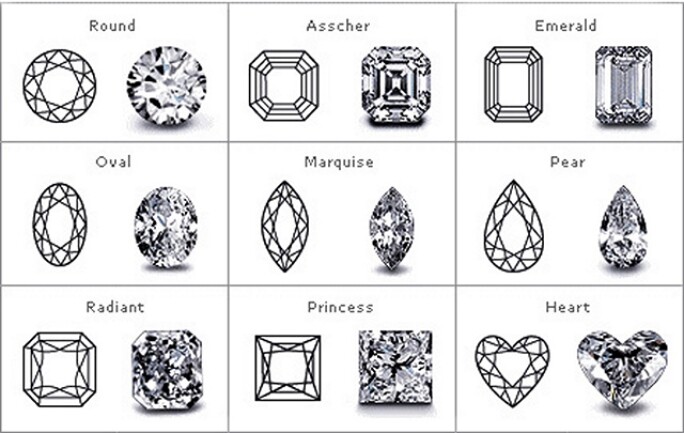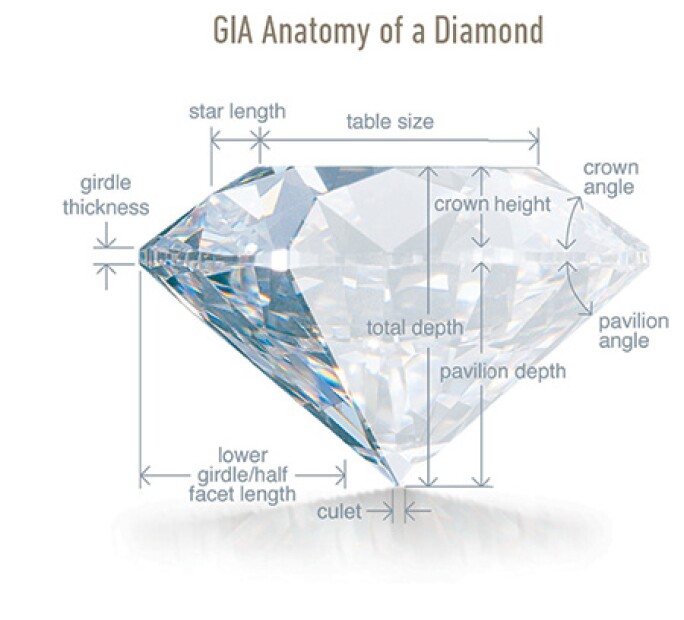W here does one begin when buying a diamond? For anyone who has never approached this seemingly unknown territory, it’s a riddle wrapped in an enigma. Most have heard of the ‘4 C’s’; the criteria introduced by the Gemologoical Institute of America to grade diamonds based on its colour, cut, clarity and carat weight. Yet, is this all there is to the formula? Perhaps not.
For thousands of years, diamonds have inspired emotions, mesmerised and seduced. The Greeks believed diamonds were the tears of the Gods while Romans theorised they were fragments of stars fallen from the sky. The Egyptians placed a diamond ring on the fourth finger, believing a 'vein of love' ran directly from the finger to the heart. They have been the source of endless stories and ultimately, a diamond’s beauty is the rarest of all their qualities.
Ultimately, the old adage, “beauty is the eye of the beholder,” could not be more true when it comes to selecting a diamond. The same as falling in love, diamonds have a way of attracting one with its unique sparkle or its one-of-a-kind colour. However, it is important to review the basics in the guide below for some inside knowledge to make the purchase an exciting venture.

FIVE UNMOUNTED DIAMONDS
What exactly is a carat?
The weight of a diamond is measured worldwide by a standard unit: the carat. The name “carat” comes from the seed of the carob tree native to Mediterranean regions, once used to weigh stones. A carat weighs 0.2 grams.
What is the GIA? What is a GIA certificate?
The GIA is the Gemological Institute of America, an independent laboratory respected worldwide. Each stone over 1 carat receives a certificate (“identity card”) attesting to the quality of the stone (4 Cs) and details its properties.
What do the 4 Cs stand for?
The 4 Cs are a global standard diamond certification developed by the GIA. These four criteria are colour, clarity, cut and carat, which determine the quality and therefore value of a diamond.
The colour scale begins with the letter D, representing colourless, and continues with increasing presence of yellow, brown or grey to the letter Z. Each letter grade has a clearly defined range of colour appearance.
Clarity refers to the absence of inclusions and blemishes, ranging from “Flawless” to “Included 3” for diamonds with obvious visible inclusions.
DIAMOND & GEMSTONE SHAPES.
A diamond’s cut is what unleashes its light. The GIA calculates the proportions of those facets that influence the diamond’s face-up appearance to evaluate how successfully a diamond interacts with light to create desirable visual effects . The cut scale ranges from “Excellent” to “Poor”.
Why does the 4 Cs colour scale begin with D and not A?
Before the GIA established the 4 Cs, diamond colour was graded from A-C, sometimes with grades like AA or AAA. It got confusing as there was no universal agreement. As a fresh start, the GIA began with D.
Why does one diamond shine more than another?
The brilliance of a diamond depends on its cut, a 4 Cs criterion. The closer the cut is to perfection, the greater the diamond’s brilliance. Sotheby’s Diamonds selects the top cut grades on the scale, thus ensuring an optimum refraction of light in the heart of stone, hence an extreme brilliance.
GIA ANATOMY OF A DIAMOND.
Can a diamond break or be damaged?
A diamond is the hardest of all gemstones and is known for its extreme durability. To contribute to its longevity, it is advisable to take great care of your diamond jewellery, preferably by keeping each diamond creation separate and avoiding contact with other pieces.
Why isn’t a 0.50 carat diamond half the price of a 1 carat diamond?
The price of a diamond depends primarily on its weight (carats), as larger diamonds are more rare. The price of a diamond increases exponentially. A 1 carat solitaire is therefore around four times more expensive than a 0.50 carat solitaire of equal diamond quality. The other 3 Cs also contribute to value.
What is the Kimberly Process?
The Kimberley Process is a joint government, international diamond industry and civil society initiative to stem the flow of diamonds used by rebel movements to finance wars against legitimate governments. These are known as “Conflict Diamonds”. The World Diamond Council System of Warranties is a programme of self-regulation that tracks diamonds through the supply chain. The System of Warranties requires all diamond suppliers and manufacturers to pass on a warranty statement, assuring any buyer of the diamond legitimacy.
The Wish List: Jewellery & Watches Online, an online-only auction that will be open for bidding until 1PM on 11 December, includes a number of beautiful loose stones, ready to be transformed into exquisite pieces of bespoke jewellery.









